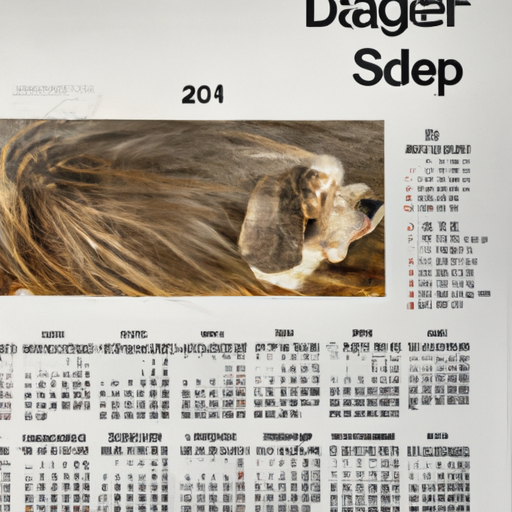“`markdown
What Months Do Dogs Shed the Most?
As a loving caregiver to your furry friend, understanding their shedding patterns can make the world of a difference in your pet care routine. Let’s delve into the world of canine shedding and find out which months your dog is likely to shed the most.
Understanding Dog Shedding
Dog shedding is a natural process where your pet loses dead or damaged hair. However, the frequency and amount of shedding can vary based on several factors, including their breed, health, and the environment. For instance, dogs with double coats, like Huskies and Retrievers, typically shed more than those with single coats.
The Role of Seasons in Dog Shedding
Your dog’s shedding pattern is influenced by daylight, more specifically the length of days. As days start to get longer in spring, dogs shed their winter coats to prepare for the warmer months. This process, known as “blowing coat”, typically occurs between late spring and early summer. On the other hand, as days get shorter in autumn, dogs shed their summer coats to gear up for winter.
Here’s a simple comparative table to illustrate this:
| Season | Coat Type Shed |
|---|---|
| Spring | Winter Coat |
| Autumn | Summer Coat |
How to Manage Your Dog’s Shedding
- Regular Grooming: Brush your dog’s fur regularly. This helps to remove dead hair and stimulates the production of natural oils in your dog’s skin.
- Healthy Diet: Feed your dog a balanced diet. Certain nutrients like Omega-3 fatty acids can help to improve your dog’s coat health.
- Hydration: Ensure your dog is always well-hydrated. Dehydration can lead to dry skin and increased shedding.
What To Do If Your Dog Sheds Excessively
Sometimes, excessive shedding can be a sign of health issues. If you notice any of the following, it’s best to consult a vet:
- Bald spots
- Skin irritation or redness
- Unusual aggressiveness when you touch their skin
FAQs
-
Do all dogs shed?
Yes, all dogs shed to some degree, but the amount and frequency can vary. -
Can I completely stop my dog from shedding?
No, shedding is a natural process. However, regular grooming and a balanced diet can help manage it. -
Is excessive shedding a sign of illness?
In certain cases, yes. If you notice any unusual shedding patterns or other symptoms, consult a vet.
Remember, as a caregiver, understanding and accepting your dog’s shedding patterns can help you provide better care and maintain a cleaner household. So, arm yourself with a good brush and lots of patience, and embrace the fluff!
“`



